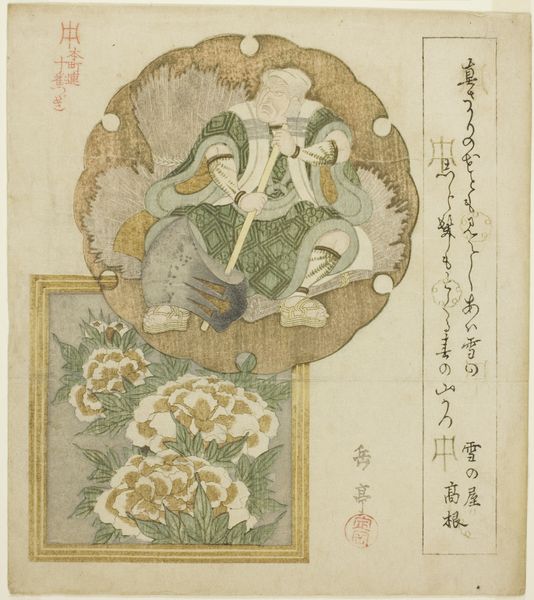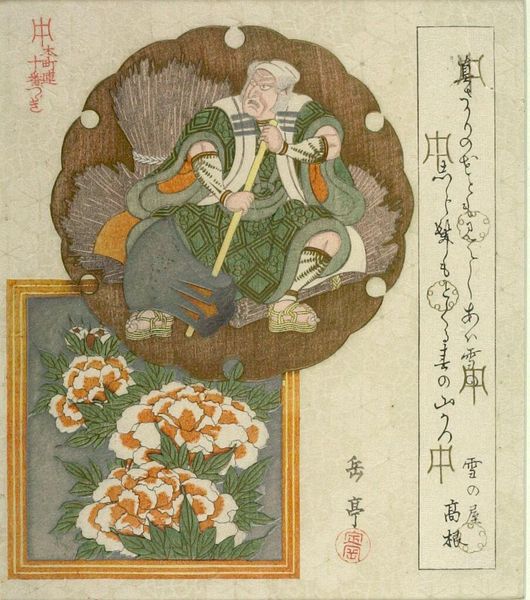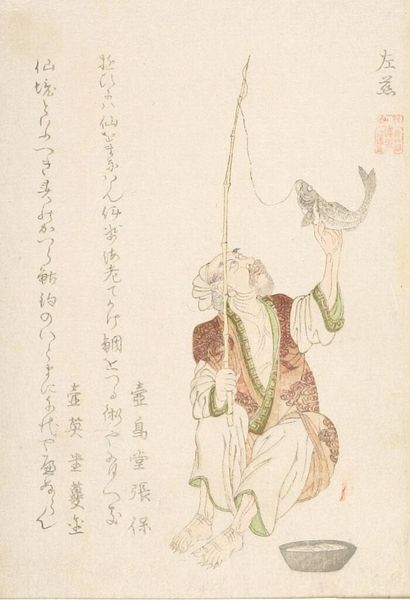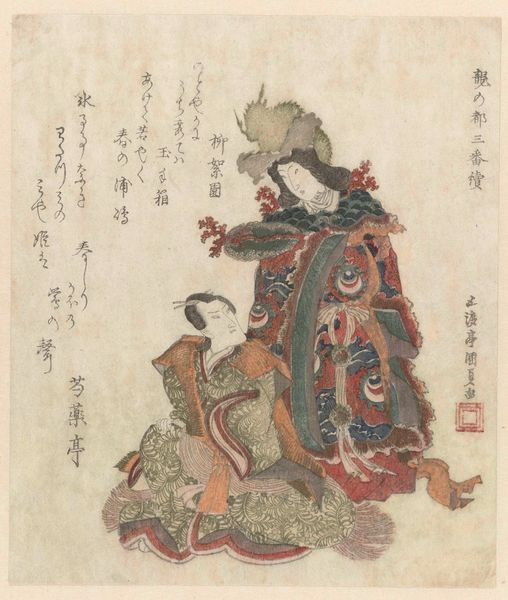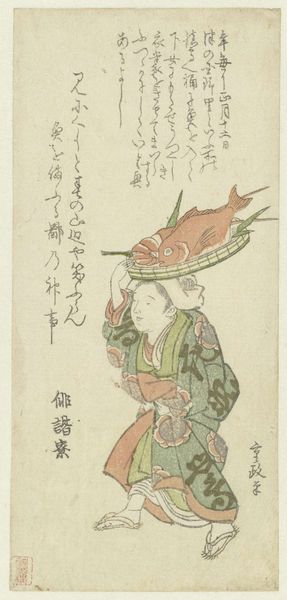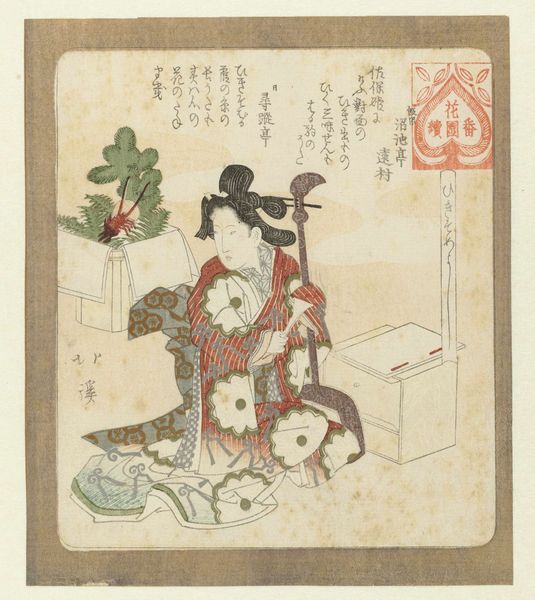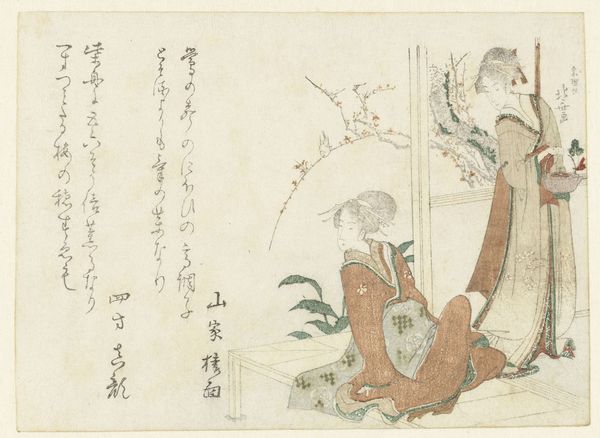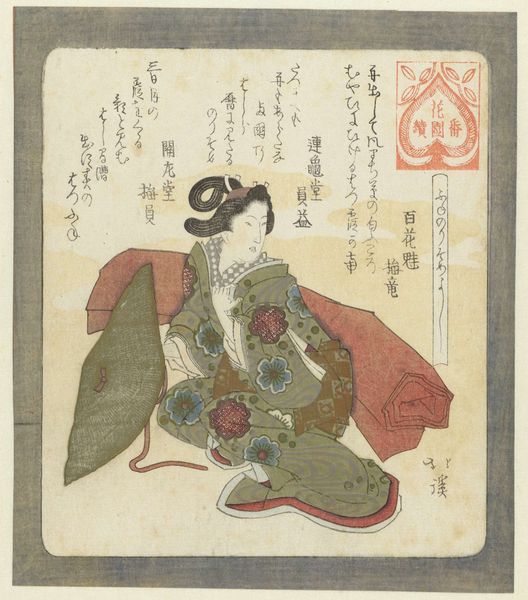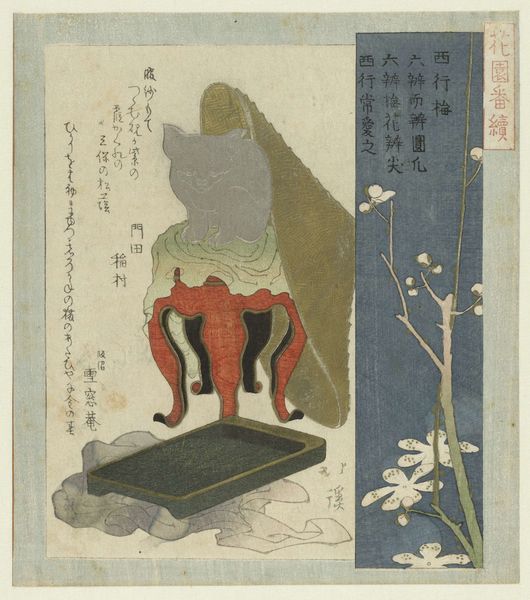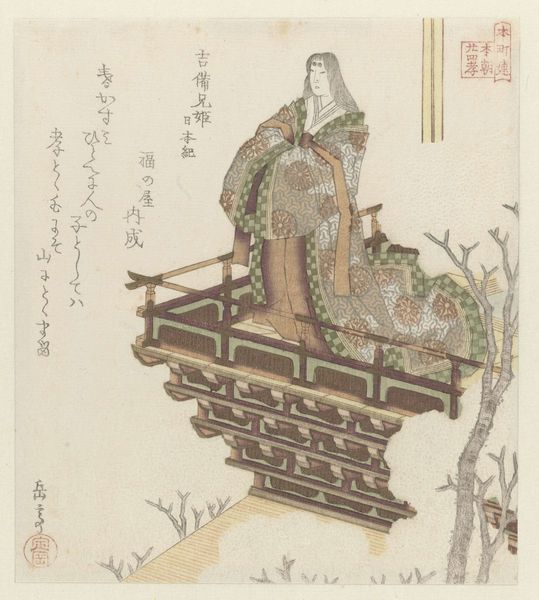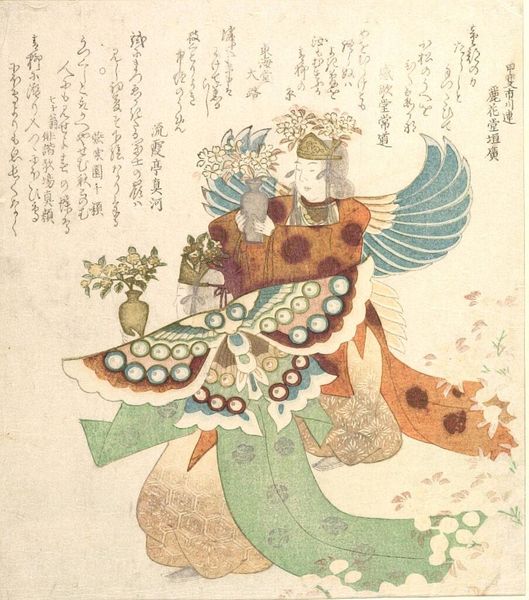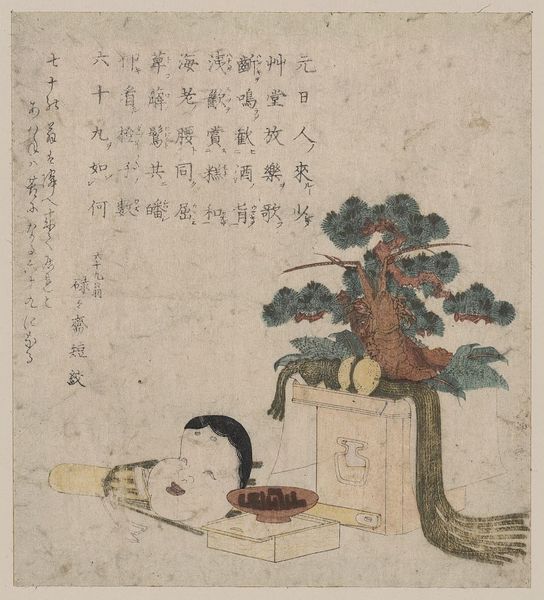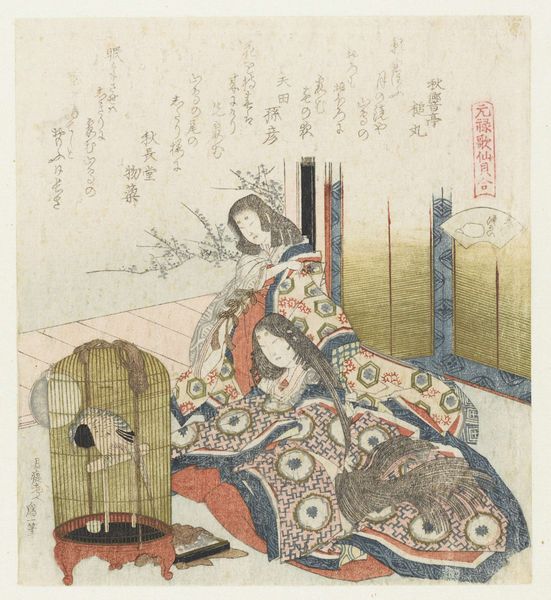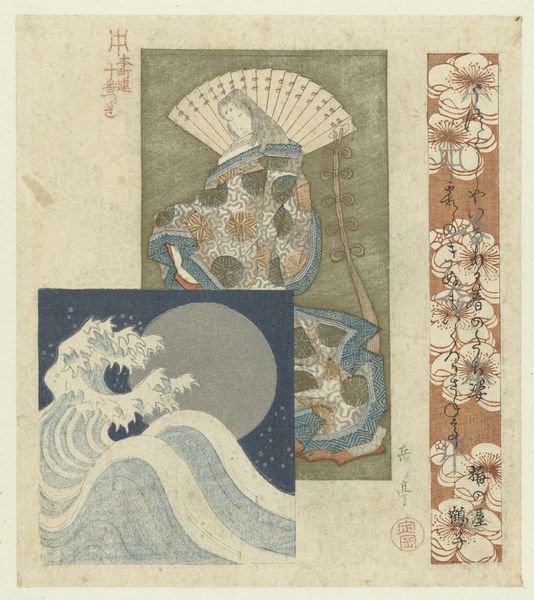
Een Ichikawa acteur met een hakbijl en pioenrozen c. 1822
0:00
0:00
print, woodblock-print
#
portrait
# print
#
asian-art
#
ukiyo-e
#
figuration
#
woodblock-print
Dimensions: height 206 mm, width 182 mm
Copyright: Rijks Museum: Open Domain
Yashima Gakutei made this woodblock print of an Ichikawa actor with a hatchet and peonies in Japan during the first half of the 19th century. Prints like this one gained popularity as Japanese society became increasingly urbanized and commercialized. The print served as a kind of publicity for the actor, part of a broader celebrity culture. Kabuki theatre held a central position in Japanese urban life, a space for entertainment but also for the negotiation of social values. Gakutei’s print flattens pictorial space and combines multiple viewpoints in a single composition, typical for the Ukiyo-e prints of his time. The actor is set against a patterned background, while below him, a framed image of peony flowers adds another layer of visual information. For art historians, prints like this provide valuable insight into the cultural values of the time. They highlight the rising status of actors, and the emergence of a mass culture fueled by commerce and consumption. By studying these prints, along with other sources, we can gain a better understanding of the complex social and cultural forces that shaped Japanese society.
Comments
No comments
Be the first to comment and join the conversation on the ultimate creative platform.
